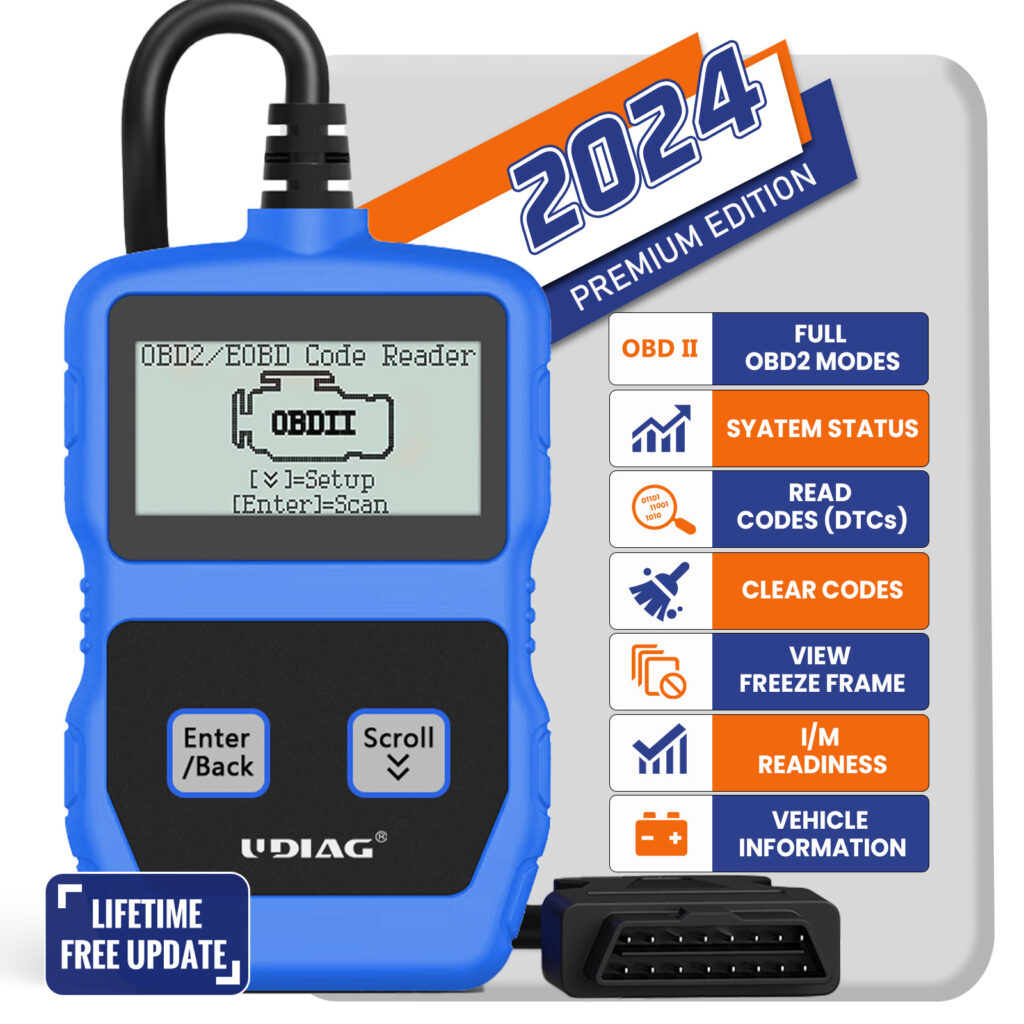How do I retrieve OBD2 trouble codes from my vehicle?
2024-04-20 by UDIAG
In the world of automotive diagnostics, the ability to retrieve OBD2 trouble codes from your vehicle can be a crucial skill. Understanding these codes not only helps in diagnosing potential issues but also plays a significant role in ensuring the overall health and performance of your vehicle. This essay will guide you through the process of retrieving OBD2 trouble codes step by step.

I. Introduction to OBD2 Trouble Codes
OBD2 trouble codes, or On-Board Diagnostics II trouble codes, are standardized codes used by vehicles equipped with OBD2 systems to indicate specific issues related to engine and emission controls. These codes provide valuable insights into underlying problems within the vehicle, allowing for effective diagnosis and repair.
II. Understanding OBD2 Systems
Modern vehicles are equipped with OBD2 systems that monitor the performance of various components such as the engine, transmission, and emissions control systems. The OBD2 system continuously checks these components for abnormalities and generates trouble codes when it detects deviations from expected parameters.
III. Types of OBD2 Trouble Codes
OBD2 trouble codes are categorized into two main types: generic and manufacturer-specific codes. Generic codes are standardized across all vehicles with OBD2 systems and provide a basic indication of the problem. Manufacturer-specific codes, on the other hand, offer more detailed information tailored to specific vehicle makes and models.
IV. Steps to Retrieve OBD2 Trouble Codes
- Prepare Your Vehicle: Ensure that your vehicle is turned off and locate the OBD2 port, typically located under the dashboard near the driver’s seat.
- Get an OBD2 Scanner Tool: Acquire an OBD2 scanner tool suitable for your needs. This could be a basic code reader or a more advanced diagnostic scanner, depending on the level of detail required.
- Connect the OBD2 Scanner: Plug the OBD2 scanner into the OBD2 port of your vehicle. Turn the vehicle’s ignition to the ON position without starting the engine.
- Retrieve Trouble Codes: Follow the instructions provided by the OBD2 scanner to establish a connection with the vehicle’s OBD2 system and retrieve stored trouble codes. The scanner will display a list of codes along with brief descriptions.
- Interpreting Trouble Codes: Refer to the scanner’s manual or online resources to interpret the retrieved trouble codes. Each code consists of a prefix (e.g., P0XXX, C0XXX) followed by specific digits indicating the nature of the problem.
- Clearing Trouble Codes (Optional): Some OBD2 scanners allow you to clear trouble codes after diagnosing and addressing the underlying issues. Clearing codes resets the vehicle’s OBD2 system and monitors, providing a clean slate for future diagnostics.
V. Next Steps After Retrieving Trouble Codes
Upon retrieving OBD2 trouble codes, it is essential to take appropriate action based on the identified issues. This may involve conducting further diagnostics, performing repairs or maintenance tasks, or seeking professional assistance from a qualified mechanic.
Conclusion
In conclusion, retrieving OBD2 trouble codes from your vehicle is a fundamental aspect of automotive diagnostics. By following the outlined steps and utilizing an OBD2 scanner tool, you gain valuable insights into your vehicle’s health and performance. Understanding and addressing trouble codes promptly can help prevent potential issues and ensure the optimal functioning of your vehicle in the long run. Embrace the power of OBD2 diagnostics to become more proactive in maintaining your vehicle’s well-being.
FAQs
1. What is an OBD2 trouble code?
An OBD2 trouble code is a standardized diagnostic code generated by a vehicle’s On-Board Diagnostics II (OBD2) system. It indicates specific issues or malfunctions detected within the vehicle’s engine or emission control systems.
2. How do I know if my vehicle has an OBD2 system?
Most vehicles manufactured after 1996 in the United States are equipped with OBD2 systems. To confirm, look for the OBD2 connector under the dashboard near the driver’s seat.
3. What does it mean when my check engine light is on?
The check engine light (or malfunction indicator lamp) illuminates when the vehicle’s OBD2 system detects a problem. Retrieving and interpreting OBD2 trouble codes can help identify the underlying issue triggering the check engine light.
4. Do I need any special tools to retrieve OBD2 trouble codes?
Yes, you will need an OBD2 scanner tool to retrieve trouble codes. Basic code readers are affordable and can display trouble codes, while more advanced diagnostic scanners offer additional features such as live data monitoring and code definitions.
5. Where is the OBD2 port located in my vehicle?
The OBD2 port is typically located under the dashboard on the driver’s side, near the steering column. It may be covered by a small panel that can be easily removed for access.


